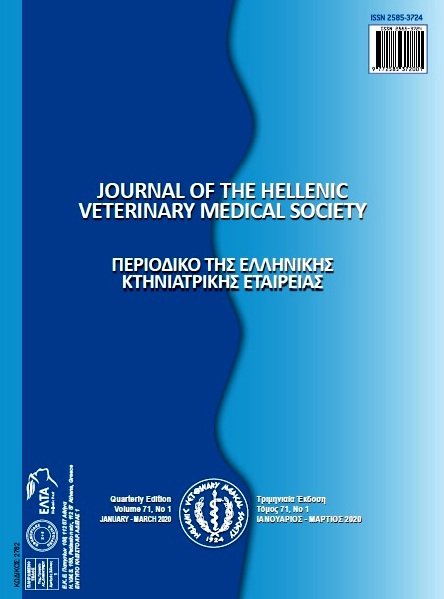Effect of environmental heat stress on Kıvırcık ram sperm parameters

Abstract
The relationship between environmental conditions and reproduction has been in sight of research. Therefore, there has been a growing interest in effect of climate change, global warming and subsequently environmental heat stress on gametes in last decades. Thus, the present study was designed to investigate the effect of environmental heat stress on Kıvırcık ram sperm parameters. In this study, semen samples (n=72) were collected from six mature rams during a 12-month study period. The temperature and relative humidity of animal box were controlled daily. The mean monthly temperature humidity index (THI) values were calculated to determine heat stress and control periods. According to the mean monthly THI values, the 36 of 72 ejaculates, which were collected between May and October, were classified as heat stress period samples. The others (n=36), which were collected between November and April, were considered as control period samples. The heat stress period sperm samples had lower sperm concentration, motility, viability, membrane integrity and higher abnormal sperm rate compared to control period sperm samples (P< 0.05). Semen volume, sperm DNA integrity and the ability of sperm to undergo acrosome reaction were detected similar between the heat stress and control periods. In conclusion, environmental heat stress was found deleterious for some sperm parameters in Kıvırcık rams.
Article Details
- How to Cite
-
KÜÇÜK, N., & AKSOY, M. (2020). Effect of environmental heat stress on Kıvırcık ram sperm parameters. Journal of the Hellenic Veterinary Medical Society, 71(1), 2073–2080. https://doi.org/10.12681/jhvms.22968
- Issue
- Vol. 71 No. 1 (2020)
- Section
- Research Articles

This work is licensed under a Creative Commons Attribution-NonCommercial 4.0 International License.
Authors who publish with this journal agree to the following terms:
· Authors retain copyright and grant the journal right of first publication with the work simultaneously licensed under a Creative Commons Attribution Non-Commercial License that allows others to share the work with an acknowledgement of the work's authorship and initial publication in this journal.
· Authors are able to enter into separate, additional contractual arrangements for the non-exclusive distribution of the journal's published version of the work (e.g. post it to an institutional repository or publish it in a book), with an acknowledgement of its initial publication in this journal.
· Authors are permitted and encouraged to post their work online (preferably in institutional repositories or on their website) prior to and during the submission process, as it can lead to productive exchanges, as well as earlier and greater citation of published work.


